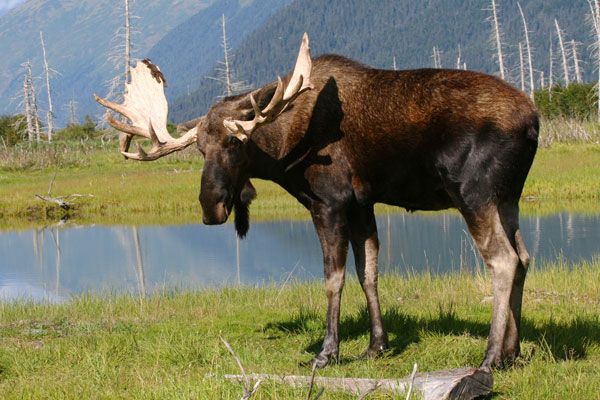Climate Change Throws Nature's Timing Out of Whack

Timing matters: Flowers bloom, insects emerge, birds migrate, and planting and hunting seasons are carefully coordinated times in order to take advantage of what other organisms, or the weather, is up to.
But increasing research is showing some of these relationships are falling out of sync as climate change alters important cues, such as the arrival of spring warmth.
"There are going to be winners and losers," said David Inouye, a biology professor at the University of Maryland, who has followed seasonal events at the Rocky Mountain Biological Laboratory in Colorado since 1973. "The ultimate outcome will be that some species go extinct and some manage to adapt."
This isn't just a problem for the natural world. Shifts in seasonal events can have direct implications for humans, "because we, as human societies, are adapted to certain seasonal conditions," said Shannon McNeeley, a postdoctoral researcher at the National Center for Atmospheric Research (NCAR) who has studied how a mismatch is playing out in Alaska. There, changes in the moose migrations have made it difficult for native people to obtain the meat they need during the legal hunting season. [10 Incredible Animal Migrations]
"This more subtle seasonal change has not been a main focus of climate research," McNeeley said. "I think it is going to be one that emerges more and more as we see these changes happening, and we start to have more conflicts around this."
Changes in nature
Evidence going back decades and sometimes even longer shows the timing of some biological events is shifting around the world. Studies document the progressively earlier arrival of spring, by about 2.3 to 5.2 days per decade in the last 30 years, according to the Intergovernmental Panel on Climate Change's 2007 report. That report lists studies showing changes in seasonal timing, or phenology, of the first and last leaves on gingko trees in Japan, butterfly emergence in the United Kingdom, bird migrations in Australia, the first leaves and flowers of lilacs in North America, among many others.
Sign up for the Live Science daily newsletter now
Get the world’s most fascinating discoveries delivered straight to your inbox.
But not everything is changing together, leading to complex results.
During his years in the Colorado mountains, Inouye has seen the winter snow melt earlier, the result of warmer springs, less snowfall during the winter and more dust carried in by storms, which accelerates melting. The last frost, however, continues to happen at about the same time.
His work indicates this is bad for the Mormon fritillary butterfly since an early start to the growing season may put caterpillars and the flower buds that could later feed adult butterflies at the mercy of frosts. Migratory hummingbirds, which also consume the flowers' nectar, are arriving earlier in the spring now, but they aren't quite keeping pace with the first flowers, a potential mismatch that could ultimately lead to fewer flowers for the birds to pollinate, said Inouye.
Decades of data show that robins are showing up earlier, as are the hibernating marmots, and there is evidence that this shift is benefiting the marmots, who appear to be putting on more weight during the summer.
Records of spring flowers in Concord, Mass., initially kept by Henry David Thoreau, show that not only are flowers blooming earlier, the species that haven't moved up their first bloom dates are disappearing.
Human implications
Even in modern society, human activities track the seasons. In search of shifts in human phenology, one study looked at national park attendance, and found a shift toward peak attendance earlier in the year for parks located in places where spring is getting warmer.
The effects of climate change are showing up dramatically in the Arctic, and changes in the timing of seasonal events are no exception, McNeeley said. "You are starting to see these seasonality mismatches in a much more enhanced way than you are in the lower 48 [U.S. states]," she said.
These changes are pushing nature and human regulatory systems apart, creating problems for Alaskan natives who depend on wild food, particularly moose, but can only legally hunt it during a specific period. The hunting season, historically, has been timed to the moose migration out of their summer feeding grounds into the territory where they perform their annual mating ritual. But lately the moose have been staying at their feeding grounds until later into the season.
"People haven't had time to harvest moose for winter and then the hunting season shuts down," McNeeley said. "That gives them two choices, either they go without moose … or they have to hunt illegally, which comes with huge penalties if they get caught."
Over the past decade, tribes have sought to shift the hunting season, but their efforts have been almost completely unsuccessful, due largely to biologists' concerns about the effects on the breeding season, she said.
In the lower 48 states, earlier snowmelt and a longer growing season are likely to create conflicts related to water rights, but updating policies will likely be difficult. The fundamental problem is the scarcity of the resource, Douglas Kenney, director of the Western Water Policy Program at the University of Colorado, told AtmosNews, an online publication of NCAR.
"This particular issue of the timing of seasons and phenology and the legal system is something that has been really understudied and I think needs to receive a lot more attention," McNeeley told LiveScience.
You can follow LiveScience writer Wynne Parry on Twitter @Wynne_Parry. Follow LiveScience for the latest in science news and discoveries on Twitter @livescience and on Facebook.
Most Popular


